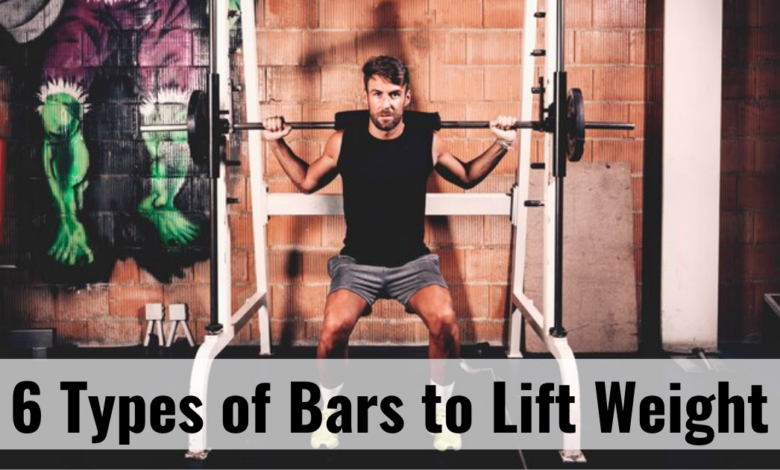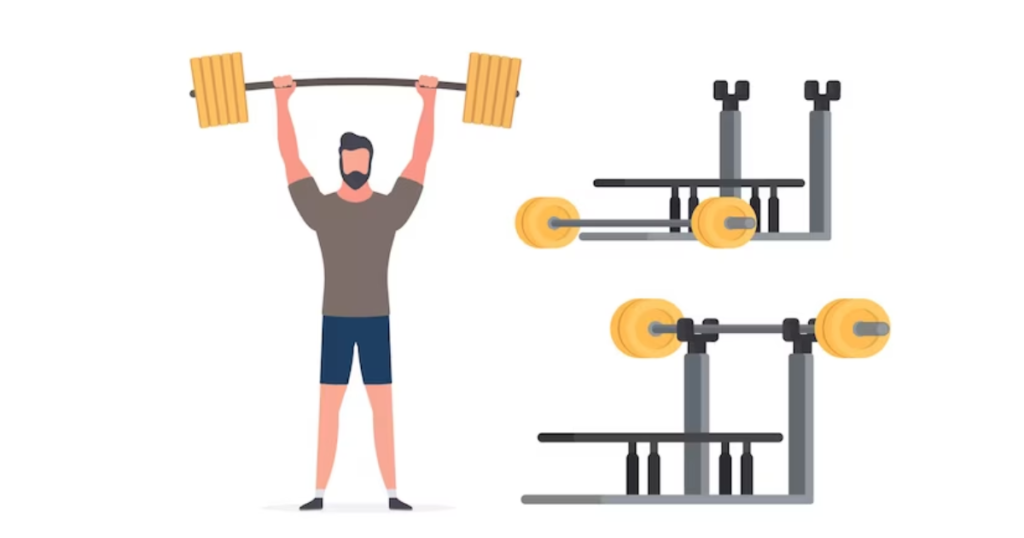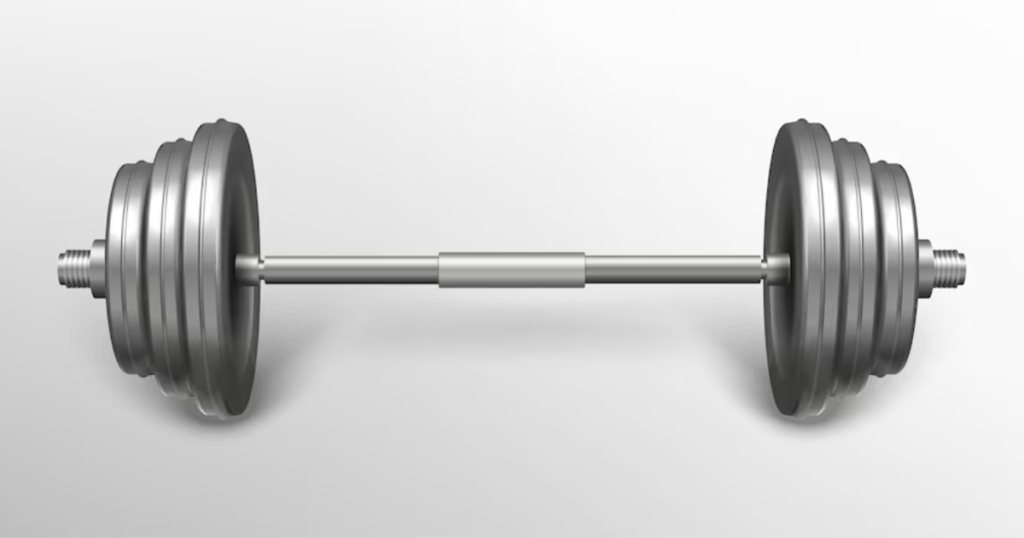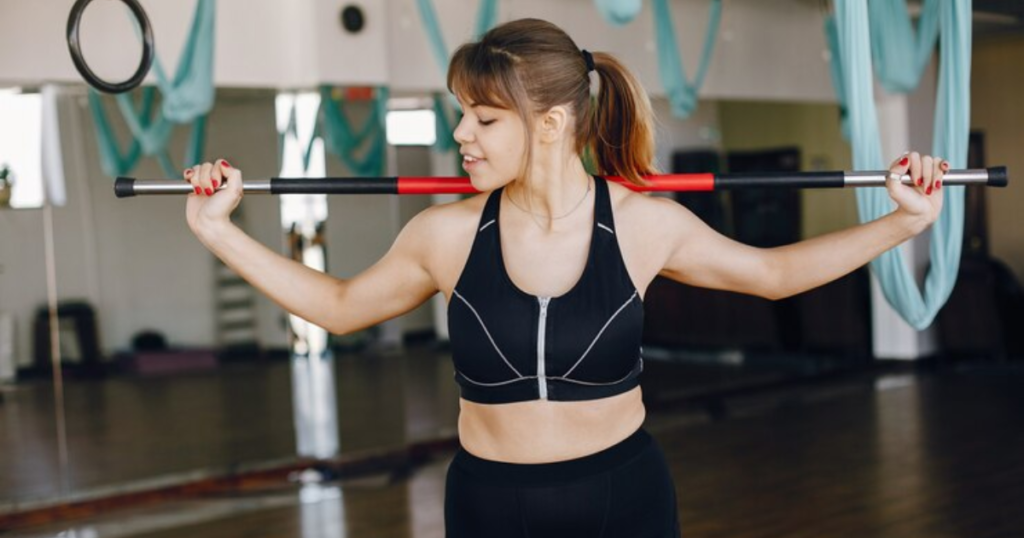6 Types of Bars to Lift Weights (2024)

The barbell is a must-have piece of weightlifting equipment. Whether you’re a seasoned lifter or just starting out, choosing the appropriate weight bars to lift can make a big difference in your training experience and results. In this tutorial, we’ll look at the various types of bars available, their features and benefits, and how to select the ideal one for your needs.
What is a Barbell?
A barbell is a piece of weightlifting equipment used for strength training and resistance exercises. It’s made of a long metal bar with weights attached to each end. Barbell exercises involve lifting, pushing, or pulling a weighted bar to target different muscular areas.
Barbells come in a variety of lengths and weights, allowing users to customize the resistance based on their fitness level and workout goals. They are essential instruments for weightlifting, powerlifting, bodybuilding, and general strength training regimens.
Different Types Of Weight Bars to Lift
1. Standard Straight Bars
Standard straight bars, 7 feet long with knurled grips, are the most commonly used weight bars to lift in gyms around the world. They are versatile, excellent for bench presses, squats, deadlifts, and overhead presses, and their simplicity makes them popular among both beginners and seasoned lifters.
2. Olympic Bars
Olympic bars are superior than regular straight bars because of their Olympic requirements, which include a 7-foot length and bigger shaft diameter. They are used in powerlifting and weightlifting contests, generally with rotating sleeves to allow for smoother lifts during exercises such as snatches and cleans.
3. EZ Curl Bars
EZ curl bars, also known as cambered bars, are weight bars to lift with a distinctive curved design that decreases wrist and elbow strain during exercises such as bicep curls, tricep extensions, and upright rows, making them popular with bodybuilders and fitness enthusiasts.
4. Trap Bars
Trap bars, also known as hex bars or shrug bars, have a hexagonal shape with handles on the sides allowing a natural and easy lifting motion. They’re perfect for workouts like deadlifts, farmer’s walks, and shrugs, which are especially good for people who have lower back problems.
5. Safety Squat Bars
Safety squat bars are meant to reduce stress on the shoulders, wrists, and lower back during squatting. They have padded shoulder rests and handles, making them popular with strength athletes and powerlifters for leg development and performance.
6. Bench Press Bars
Bench press bars, commonly known as powerlifting bars, measure 6 feet in length and have a shaft diameter of 32mm. They have strong knurling for grip and are often used in powerlifting events and strength training programs.

Features and Specifications To Look For When Choosing a Barbell
When choosing a barbell, several factors should be considered:
Length and Diameter
Barbells come in a variety of lengths and diameters, which influence their usefulness for particular exercises and body types. Longer bars allow for more diverse grip postures, whereas thicker bars promote grip strength development.
Weight Capacity
Each barbell has a maximum weight capacity, which indicates how much weight it can safely hold. To avoid bending or breaking under excessive loads, choose a bar with a weight capacity that is appropriate for your lifting goals.
Knurling and Grip
Knurling is the rough pattern on a barbell’s surface that adds grip during lifts. The severity of the knurling varies across bars, altering comfort and hand placement. Some lifters prefer severe knurling for better grip, but others prefer a smoother surface to prevent hand fatigue.
Material and Construction
Barbells are normally made of steel, however the quality of materials and construction varies by manufacturer. High-quality bars are frequently made of heat-treated steel for durability and lifespan, whereas low-cost alternatives may employ lower-grade materials that are more prone to bending or corrosion.
How Much Does the Bar At the Gym Actually Weigh?
The weight of the bar in a gym varies based on the type of barbell utilized. The most common weight for a conventional straight barbell, which is used for exercises such as bench presses, squats, and deadlifts, is approximately 20 kilograms (44 pounds) for men and 15 kilograms (33 pounds) for women.
However, it is important to remember that not all barbells are the same. Olympic barbells, which are often used in weightlifting competitions and gyms with serious weightlifting setups, can be slightly heavier. A male Olympic barbell weighs approximately 20 kilograms (44 pounds), whereas a female Olympic barbell weighs approximately 15 kilograms (33 pounds).

Benefits of Using Different Bars
Different bars used for lifting weights can help in different ways:
- Targeting Muscles: Some bars let you hold them in different ways. This can help work out specific muscles better. Like, using a special bar for bicep curls can focus on different parts of your arm muscles.
- Less Strain: Certain bars are made to be easier on certain body parts. For instance, there are bars that can make squats easier on your wrists and shoulders, or ones that are gentler on your upper back.
- Stronger Grip: Bars with thicker grips make your hands work harder to hold on. This makes your grip stronger, which is good for exercises like deadlifts.
- More Stability: Some bars have different shapes, giving you more ways to hold them. This helps you stay steady while lifting, which can prevent injuries and help you lift better.
- More Variety: Using different bars keeps your workouts interesting and helps your muscles grow more.
- Help with Injuries: Certain bars are made for people who have been hurt or have trouble moving. They let you keep working out without making the pain worse.
- Training for Sports: Some bars are made for specific sports, like weightlifting. Using these bars helps athletes get better at their sport.
What Weight Bar for Which Exercises?
1. Standard Straight Barbell
The basic straight barbell is probably the most prevalent type of weight bar to lift. It is straight and normally measures around 7 feet long. This barbell is versatile and can be used for a variety of workouts, including:
- Bench Press: Whether you’re performing flat, incline, or decline bench presses, the standard straight barbell is an excellent choice.
- Squats: When placed across your upper back, the straight barbell provides stability and support during squats.
- Deadlifts: The straight barbell allows for a secure grip and proper form during deadlifts, making it a staple for lower body strength training.
- Barbell Rows: This exercise targets the muscles of the back, and the straight barbell facilitates a smooth range of motion.

2. EZ Curl Bar
The EZ curl bar, also known as a cambered bar, has angled grips that help to alleviate wrist and elbow strain. It is widely used for exercises that target the biceps and triceps, such as:
- Bicep Curls: The angled grips of the EZ curl bar provide a more comfortable and natural hand position, allowing for better isolation of the biceps.
- Tricep Extensions: Whether performing overhead tricep extensions or lying tricep extensions, the EZ curl bar helps alleviate wrist discomfort.
- Preacher Curls: This exercise specifically targets the biceps, and the EZ curl bar’s shape allows for a full range of motion while minimizing wrist strain.

3. Trap Bar
The trap bar, also known as a hex bar, is a special sort of weight bar to lift with a hexagonal shape and open sides. This design enables the lifter to stand inside the bar, making it excellent for workouts like:
- Deadlifts: The trap bar deadlift places less stress on the lower back compared to the traditional straight barbell deadlift, making it suitable for individuals with back issues.
- Farmers Walk: Holding the trap bar at your sides, you can perform farmers walks to improve grip strength, core stability, and overall conditioning.
- Shrugs: The trap bar can also be used for shrugs to target the trapezius muscles, with the open design allowing for a greater range of motion.

4. Olympic Barbell
The Olympic barbell is comparable to a regular straight barbell, but it is intended to meet special specifications for use in Olympic weightlifting events. It is stronger and more stiff than traditional barbells and is used for exercises such as:
- Clean and Jerk: This classic Olympic weightlifting movement requires explosiveness and precision, and the Olympic barbell’s design is well-suited for handling heavy loads.
- Snatch: Another Olympic weightlifting staple, the snatch involves lifting the barbell from the floor to overhead in one fluid motion, demanding balance, coordination, and strength.
- Powerlifting: While not exclusive to Olympic lifting, the Olympic barbell is commonly used in powerlifting competitions for exercises like the squat, bench press, and deadlift.
Read More: How Long Does Pre Workout Last?
Conclusion
Choosing the appropriate barbell is critical for improving your weightlifting performance while reducing the risk of injury. Whether you’re a beginner or an experienced lifter, choosing a bar that fits your training goals, preferences, and budget is critical to attaining the best results. Consider bar type, features, and maintenance requirements to provide a safe, effective, and fun lifting experience.
Frequently Asked Questions
What are weight bars used for?
Weight bars are used for strength exercises such as bench presses, squats, and deadlifts. They help you lift weights safely and effectively in order to build muscle and strength.
How much weight can a weight bar hold?
Weight bars come in a variety of sizes and weight capabilities. A typical weight bar can hold between 200 and 300 pounds (90 and 136 kilograms), although Olympic weight bars can sometimes hold 1000 pounds (454 kilograms) or more.
Are there different types of weight bars?
Yes, there are several sorts of weight bars. Some are straight bars, while others are curved or include varied grips. Olympic bars are thicker and heavier than conventional bars, making them suitable for more advanced lifting.
Can I use weight bars to lift at home?
Yes, you can use weight bars at home if you have the space and equipment. Many people set up home gyms with weight benches and racks to safely lift weights. Just make sure to follow proper form and technique to prevent injuries.
Do I need special weights for weight bars to lift?
Yes, you will need weight plates to attach to the weight bar. These plates come in a variety of sizes and weights, allowing you to customize the total weight you lift. Weight plates can be purchased separately or as a package with the weight bar.



